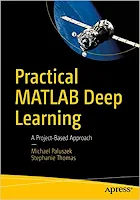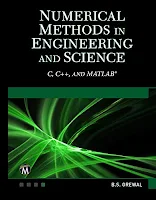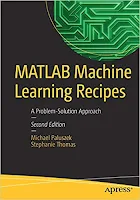Fundamentals of Graphics Using MATLAB
Ranjan Parekh ... 426 pages - Publisher: CRC Press; (December, 2019) ... Language: English - ISBN-10: 0367184826 - ISBN-13: 978-0367184827.
This book introduces fundamental concepts and principles of 2D and 3D graphics and is written for undergraduate and postgraduate students of computer science, graphics, multimedia, and data science. It demonstrates the use of MATLAB programming for solving problems related to graphics and discusses a variety of visualization tools to generate graphs and plots. The book covers important concepts like transformation, projection, surface generation, parametric representation, curve fitting, interpolation, vector representation, and texture mapping, all of which can be used in a wide variety of educational and research fields. Theoretical concepts are illustrated using a large number of practical examples and programming codes, which can be used to visualize and verify the results.
Key Features: Covers fundamental concepts and principles of 2D and 3D graphics + Demonstrates the use of MATLAB programming for solving problems on graphics + Provides MATLAB codes as answers to specific numerical problems + Provides codes in a simple copy and execute format for the novice learner + Focuses on learning through visual representation with extensive use of graphs and plots + Helps the reader gain in-depth knowledge about the subject matter through practical examples + Contains review questions and practice problems with answers for self-evaluation
This book introduces fundamental concepts and principles of 2D and 3D graphics and is written for undergraduate and postgraduate students of computer science, graphics, multimedia, and data science. It demonstrates the use of MATLAB programming for solving problems related to graphics and discusses a variety of visualization tools to generate graphs and plots. The book covers important concepts like transformation, projection, surface generation, parametric representation, curve fitting, interpolation, vector representation, and texture mapping, all of which can be used in a wide variety of educational and research fields. Theoretical concepts are illustrated using a large number of practical examples and programming codes, which can be used to visualize and verify the results.
Key Features: Covers fundamental concepts and principles of 2D and 3D graphics + Demonstrates the use of MATLAB programming for solving problems on graphics + Provides MATLAB codes as answers to specific numerical problems + Provides codes in a simple copy and execute format for the novice learner + Focuses on learning through visual representation with extensive use of graphs and plots + Helps the reader gain in-depth knowledge about the subject matter through practical examples + Contains review questions and practice problems with answers for self-evaluation



















